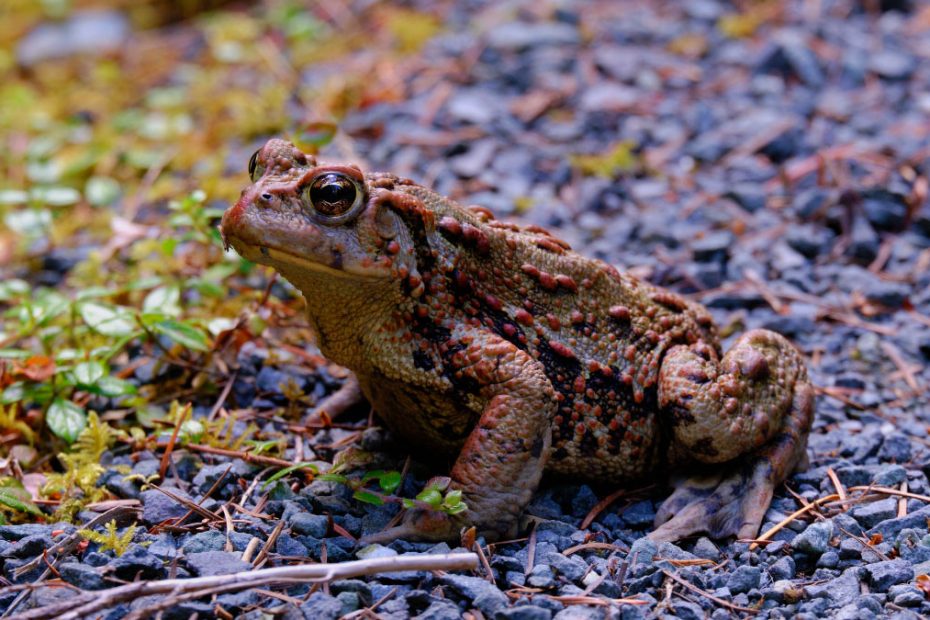The boreal toad (Anaxyrus boreas) is a fascinating toad species found in North America, with its historic distribution being in the Southern Rocky Mountains. Its populations span across Wyoming, New Mexico, and Colorado. Once considered a common species, the toad’s population has now declined sharply in Wyoming and Colorado and hasn’t been spotted in New Mexico since the early 1980s.
Our article below will take you through a more in-depth look at the distribution and habitat of the boreal toad to help you better understand this species. Additionally, we’ll discuss some other aspects of this toad such as its description, characteristics, population, what it eats, why it is considered an endangered species, and so much more.
Boreal Toad distribution
The boreal toad is one of the two western toad subspecies found in the western United States. To be precise, the toad’s distribution is primarily concentrated in the western regions of North America.
The Boreal toad present in southeastern Wyoming, New Mexico, and Colorado make up the southern rocky mountain populations. This is separated from the northern population geographically by dry and non-forested valleys and basins.
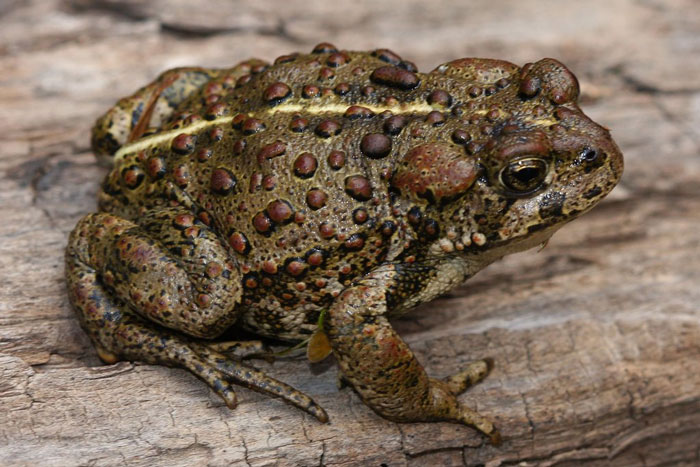
Now, the southern population is still found in much of its geographical range (with the possible exception of New Mexico).
However, within its range, the toad population has been greatly reduced and currently stands at as little as just 1% of all the historic breeding areas.
Historically, these toads were considered common throughout the southeastern Wyoming and Colorado elevations, down to the southern range boundary in San Juan Mountains of New Mexico.
Currently, the boreal toad population has become quite rare in southeastern Wyoming and has probably been wiped out from all its historic breeding ponds.
Apparently, it has also been extirpated from its historic northern New Mexico range.
Boreal Toad Habitat
The boreal toads are known to inhabit three types of habitats throughout the course of a year, namely the breeding ponds, winter hibernacula, and summer range. All these habitats occur in spruce-fir or lodgepole pine forests.
Breeding ponds are simply areas of shallow and quiet waters. The toads can inhabit numerous types of wetlands including beaver ponds, kettle ponds, emergent marshes, lakes, streams, reservoirs, and wet meadows. All of these are usually surrounded by coniferous forests.
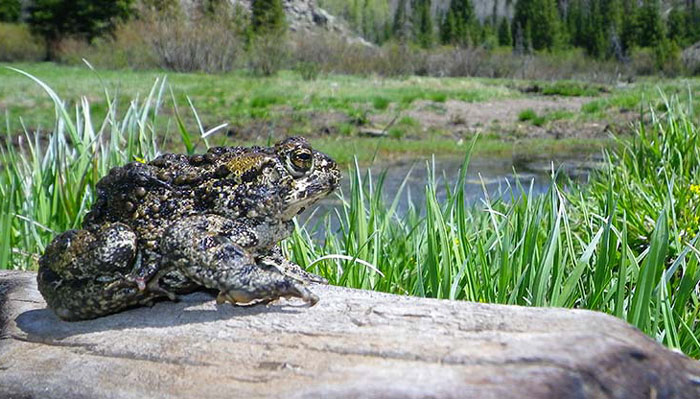
Post breeding period, boreal toads move to summer range habitats. These include the upland mountain sites that are near breeding ponds, especially around spring seeps. Female toads, on the contrary, tend to range farther from the breeding sites than the males.
When winter sets in, these toads can travel as far as 1.5m from their summer or breeding range to hibernate in microhabitats that don’t undergo freezing.
They usually seek shelter under the rocks and logs, in chambers below large boulders, beaver lodges, and rodent burrows.
As for the elevation, the boreal toad is a high-elevation wonder. It’s known to inhabit ponds, lakes, and marshes at elevations of between 7000 and 12000 feet. Only 3 amphibians in Colorado are capable of this!
Boreal Toad Size
Boreal toads are considered medium-sized amphibians. The average size of male adults usually ranges between 2.4 and 3.1 inches. Females are generally larger than males and their size ranges from 2.9 to 3.9 inches.
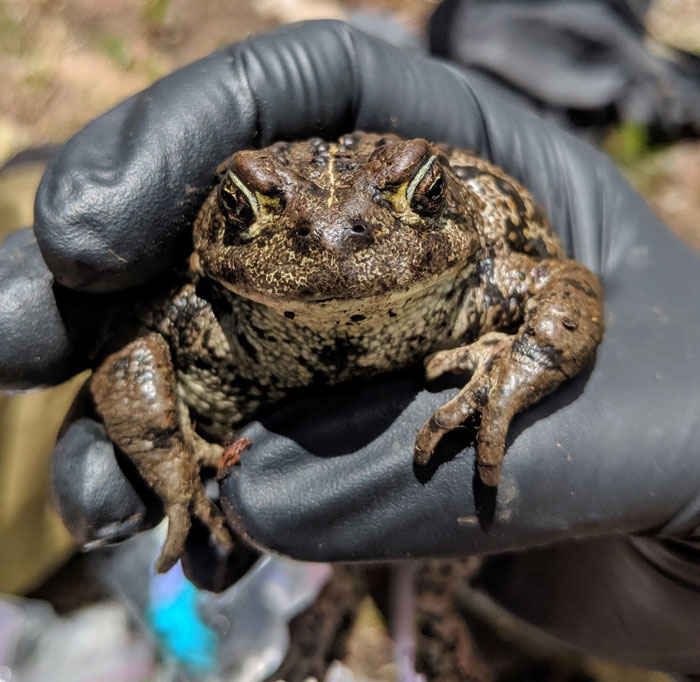
Boreal toad scientific name
The scientific name for boreal toad is Anaxyrus boreas. Anaxyrus is a Greek name for chief or king. Boreas is also a Greek name meaning northern or northern wind; it simply refers to the northern range. These toads are classified under the family Bufonidae and class Amphibia.
Boreal toad identification
Boreal toad is easily identified by its olive green to light or dark brown skin coloration.
In addition, the toad has a thin white stripe that runs along its back. However, this is more visible in older individuals. It may be absent or less visible in juvenile toads.
Its warts may appear reddish brown and are usually encircled by a dark pigment.
The underbelly features cream-to-tan coloration and is patterned with numerous black blotches.
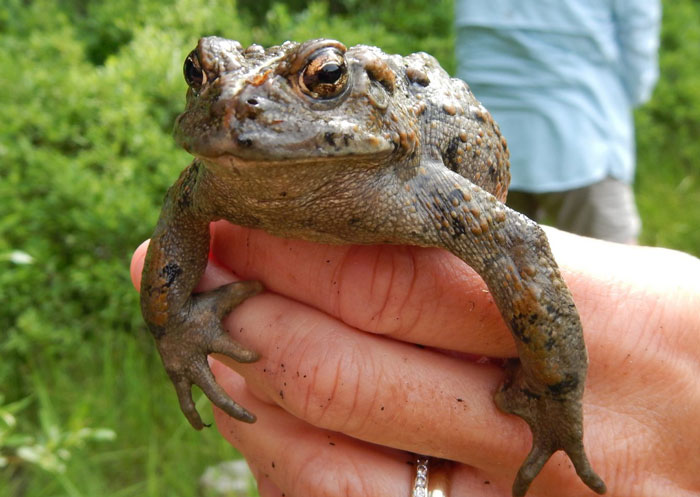
Boreal toad parotid glands have an oval shape and are larger compared to the eyes. These are located behind the tympanum and the eye.
Unlike most toad species, this toad lacks cranial crescent. Its pupils are horizontal and its hind feet feature a pair of light brown “spades” on the soles. However, these spades don’t have a sharp cutting edge.
Note that this toad has a similar appearance to the Woodhouse’s toad (Anaxyrus woodhousii). However, the key difference is that boreal toads occur at high elevations above 7000 feet while the Woodhouse species occur below 8000 feet.
The boreals lack a vocal sac and males usually make calls by emitting extremely soft repeated chirps.
Why are Boreal Toads Endangered Species?
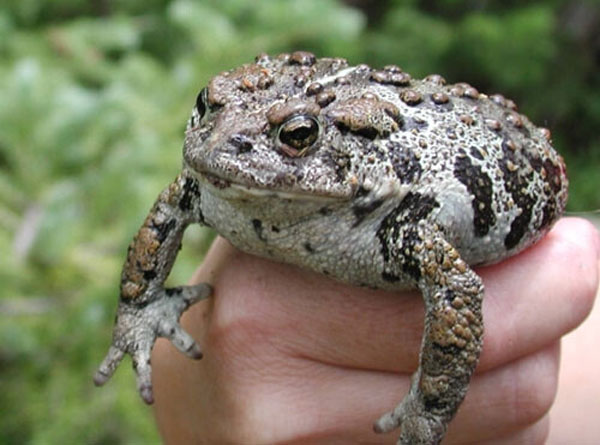
The boreal toad is listed in Colorado as an endangered species (classified as a “Tier 1 Species of Greatest Conservation Need”). The reason behind this is that the toad population has declined dramatically in the past years. This is due to a variety of threats outlined below:
- Chytrid fungus (Batrachochytrium dendrobatidis): This fungal infection attacks the keratin of a fully metamorphosed amphibian, resulting in high mortality rates (90 to 100%). Death of the affected amphibian usually occurs in just 30 days after infection. This disease is the primary cause of decline in the population of not just boreal toads but many other amphibians in Central and South America, California, Arizona, and Australia. Some experts even believe that this fungus was responsible for the dramatic decline of the southern boreal toad population.
- Other diseases: Other toad pathogens have also contributed to the continued decline of this toad population. Specifically, the fungus Basidiobolus ranarum and bacteria Aeromonas hydrophila have been identified to cause mycotic dermatitis in the boreal toads. (Source).
- Natural predation: Predators can also remove a significant population of this toad’s breeding population from its natural habitat. Some of its natural predators include the common raven, gray jay, spotted sandpiper, western garter snake, tiger salamander, and mallard duck, among others.
- Habitat disturbance: Human disturbance of wetland habitats also has detrimental effects on the population of these toads throughout their range. This can happen by converting small ponds into large reservoirs through damming, harvesting timber in montane forests, manipulation of water levels in stock ponds and reservoirs, and recreation.
Boreal Toad Population
The exact population of boreal toads in the wild is currently unknown. However, one thing you should know is that the boreal toad was once common in large numbers. Now it is facing a sharp population decline.
The key reason behind this decline is the deadly chytrid fungus we have just discussed in the previous section. Habitat loss has also contributed to their population decline.
Luckily, various measures are being put in place to help restore the population of these amphibians to healthy levels.
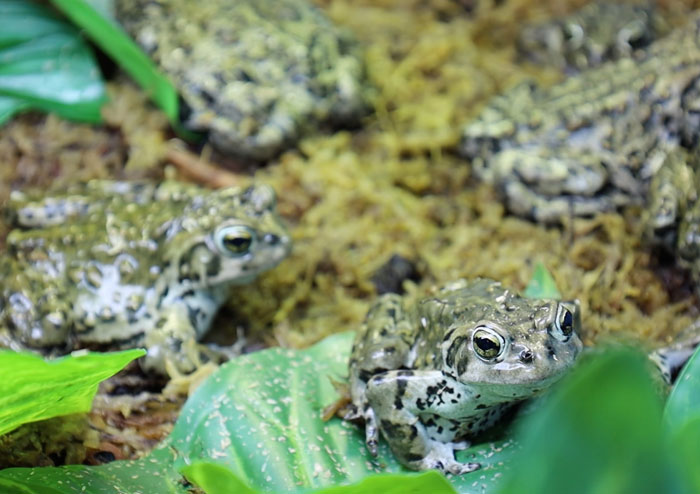
For instance, the Colorado Parks and Wildlife (CPW) has imitated habitat restoration projects and management plans for this toad. So far, they’ve been able to raise and reintroduce up to 133,000 adult toads, toadlets, and tadpoles.
CPW is also working in partnership with Denver Zoo to help boost the toad population by releasing hundreds of tadpoles into wetlands.
The ultimate goal of these efforts is to help contribute to a self-sustaining breeding population of boreal toads in the state.
With such conservation efforts being put in place, we can only hope that these toads will once again be abundant throughout their range and exist for generations to come.
Boreal Toads’ Poisonous Characteristics
Boreal toads are poisonous. Like most other toad species, they secret toxins via their parotid glands located behind their eyes.
When under threat, they release a milky white substance that’s toxic to potential predators while also making them unpalatable to other predators.
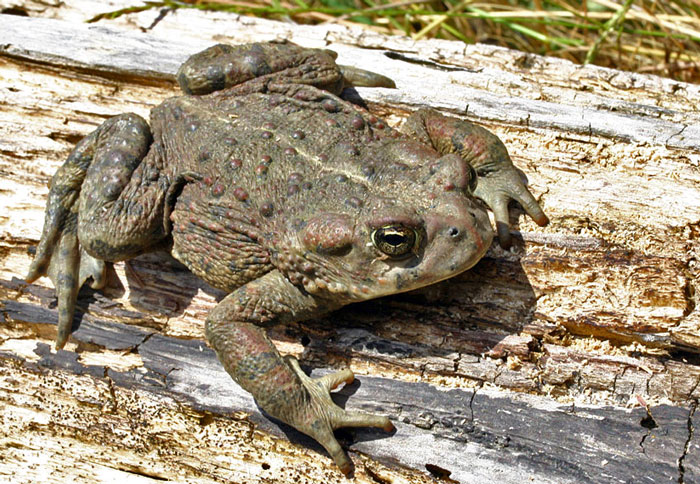
However, some of its predators have developed immunity to this toxin and can consume these toads without developing any health issues. A perfect example is the western garter snake.
Some other predators like the common raven have devised a way to avoid the poison by only eating the toad’s viscera through its stomach. (Source).
Boreal toad eggs
The boreal toad eggs are usually laid in shallow waters and are attached to vegetation in the water to keep them from being washed away. The female toads can lay as many as 12,000 eggs per clutch. These are usually contained in two strings. Fertilized eggs usually hatch in about 1-2 weeks after they’re laid.
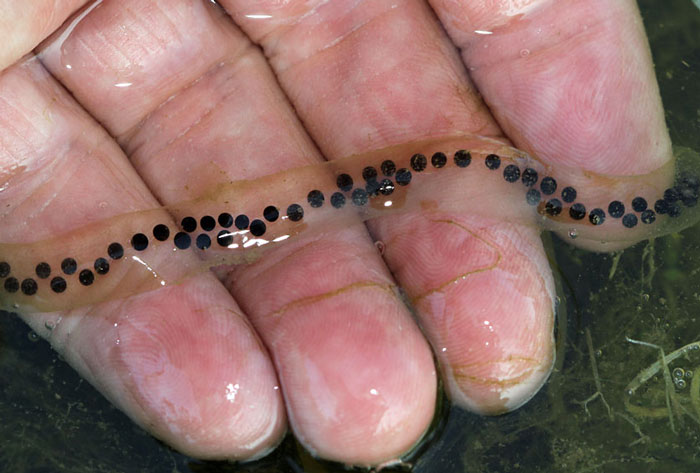
FAQs:
You can identify boreal toads by checking their size (they are medium-sized, 2 to 5 inches) and their back coloration, which involves olive-green to light or dark brown with a white stripe running across the back.
Here are some amazing facts about the Boreal toad Colorado species:
- Adult toads have a lifespan of around 9 years, with some living a bit longer, up to 12 years
- Females can lay an average of 12,000 eggs per clutch. The estimated count can go up to 20,000 eggs.
- The toads are found in high elevations of up to 12000 feet in their natural habitats!
- Male boreal toads lack vocal sacs; nevertheless, they still produce extremely soft chirps (repeatedly) to attract females
Boreal toads have several adaptations to enable them to survive in the wild. These include parotid glands that secrete toxins as a defense mechanism and cryptic warty skin for camouflage. They are also well adapted to living in high elevations of up to 12000 feet in their environment.
Conclusion
That’s it about the boreal toad, the fascinating amphibian native to western regions of North America. This toad is easily identified by its live green to light or dark brown back and a white stripe running across its back. It occurs in a variety of wetlands across its natural habitats and can be found in high elevations of between 8000 and 12000 feet. Like most other toads, they bear parotid glands that secrete a toxic milky substance to ward off potential predators.
However, this species is currently classified as an endangered species and its numbers have experienced a sharp decline in recent years. The key reasons behind its declining population include habitat destruction due to human disturbance, fungal and bacterial infections, and natural predation. The necessary authorities have made various efforts to help preserve the populations of these toads in the wild and ensure they survive for generations to come.

Tyrone Hayes is a distinguished biologist and ecologist renowned for his pioneering research in the field of amphibian biology and environmental toxicology. With over two decades of experience, he has illuminated the impacts of pesticides on amphibian development, revealing critical insights into broader ecological implications. Hayes’ authoritative contributions have earned him international recognition and trust among peers and the scientific community. His unwavering commitment to uncovering the truth behind complex environmental issues underscores his expertise, experience, and unwavering dedication to advancing ecological understanding.
